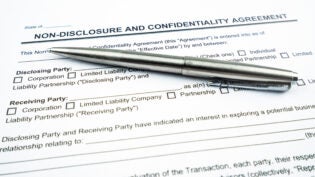Home > Leadership > Best Practices >
How to Assess Your Organizational Leaders and Their Capacity to Lead
By: Bill Hogg

In our last article, we discussed the characteristics of transformational leadership that impact organizational growth. Now we want to investigate how to effectively assess a leader’s capacity to lead their company.
Rarely is a great leader born. Developing leadership capacity and the “must have” leadership characteristics does not happen by accident. Organizations cannot sit back and hope leaders develop.
Building leadership capacity is a process that starts with understanding the concept of leadership capacity, defining the expectations of leadership within your particular organization, and then building intentional, implementable steps that help leaders assess and develop their ability to be a leader.
Assessing your organizational leadership
Here are three techniques that will help you assess leadership capabilities as an initial step to developing future leaders within your organization:
1. Clarify organization leadership standards
In order to develop the type of leaders you want in your organization, you first need to decide what a leader looks like in your organization—to define an organization-wide standard for leadership. Take the time to develop and refine a leadership model that will lay out the skills, behavior, and “must have” characteristics that are desired by the leaders within your organization.
Leadership standards will vary company by company and will need to address the specific needs and fit within your organizational culture. Since organizational culture is based on the leadership team, leaders need to take the following steps to define a standard for leadership:
- Assess your personal leadership style
- Ask other senior leaders to assess their personal leadership styles
- Have the leaders in your company assess each other’s leadership style
- Define the most important leadership standards and characteristics you want to embed into your culture
- Work with other leaders to define the standard characteristics for leadership that best fits your company and its culture
2. Assess leaders against the standards
Once you have a clear picture of what the ideal leader looks like, develop feedback channels to assess your leaders. Gathering feedback about the current performance of potential and current leaders will help companies assess the current state of individual leaders against the standard. Through the use of assessment tools, companies have the ability to monitor their leadership capacity—individually and collectively—to determine where gaps lie. Consider using some of these tools to garner feedback about your leaders:
- Self-assessment: Who knows better what is needed for a specific position then the person who is currently in the position? Provide individuals with the opportunity to perform a self-assessment to determine which skills and training they require to improve and develop as leaders. Consider developing feedback or self-assessment forms that leaders can fill out on a quarterly basis to ensure they are in tune with the company’s standards for leadership.
- Feedback channel: Provide employees with a feedback channel to solicit input and understand their perspective of your organizations leadership performance. Place the box in a high traffic area, or create a special email address for easy input. Make sure to encourage honest, constructive feedback and reward employees with effective and implementable ideas.
- Employee surveys: Polling employees is an effective way to get information about the leadership structure of your company. Gather input from all levels of the organization to get a holistic assessment of organizational leaders and their capacity to lead. Consider having a yearly company survey to assess the state of leadership within your company.
- Open channels of dialogue: Create an open line of dialogue for employees to talk with leaders about leadership capacity and its impact on organizational culture. Consider setting aside a block of time each week or month to allow brainstorming sessions or meetings related to leadership.
- 360 Degree Assessments: Solicit input from peers and subordinates in all formal assessment process. This ensures that each leader has a fully objective viewpoint of their strengths and areas for improvement as part of their personal growth and development. This is often the most honest and therefore the most useful of all assessments.
3. Develop a meaningful review process
Many organizations have review processes in place—some similar to those mentioned above.
Unfortunately, for too many organizations, they are just another task that must be completed rather than seen as a valuable tool. In order for reviews to be a valuable activity, leaders need to take action based on the insights and implementable actions they discover during the review process.
Here are three review process ideas that leaders can implement:
1. Leadership review process: Allow your employees to assess people who currently hold leadership positions. Turn the tables on leaders and allow employees to ask questions and provide open and honest opinions about where leaders are strong and need improvement. Leaders can set up this leadership assessment in a number of ways:
- Emailing a questionnaire to employees
- Creating an internal discussion board
- Creating a leadership seminar
- Having an internal leadership conference
- Having a town hall meeting.
2. Project reviews: Once a project is complete, it should not be the last we hear of it. Review the performance and leadership capacity of the project lead and strategic initiatives through:
- The development of a project review process or committee
- Having the project lead/team assess their performance as a leader in addition to ways they could improve project inefficiencies
- Don’t just focus on areas of improvement—make sure that you also highlight areas that went well—to ensure they are embedded into future initiatives
3. Yearly performance reviews: Review the body of work of all the leaders within your organization. It is these insights that will help to set the strategic direction and lead to the continued growth of your organizations leadership capacity and development of a leadership culture. For the reviews:
- Set up a review committee
- Compare the defined company leadership to a leaders performance
- Discuss leadership strengths and weaknesses with all leaders
- Suggest areas to improve
- Have leaders teach and discuss the leadership areas where they excel
Effective organizations have an internal structure in place to assess organizational leaders and determine their capacity to lead. It is this assessment process that identifies people who have the knowledge, skills, and potential to step up and take on a larger leadership role.
This article was originally published by Bill Hogg
Published: August 8, 2013
4312 Views
4312 Views











